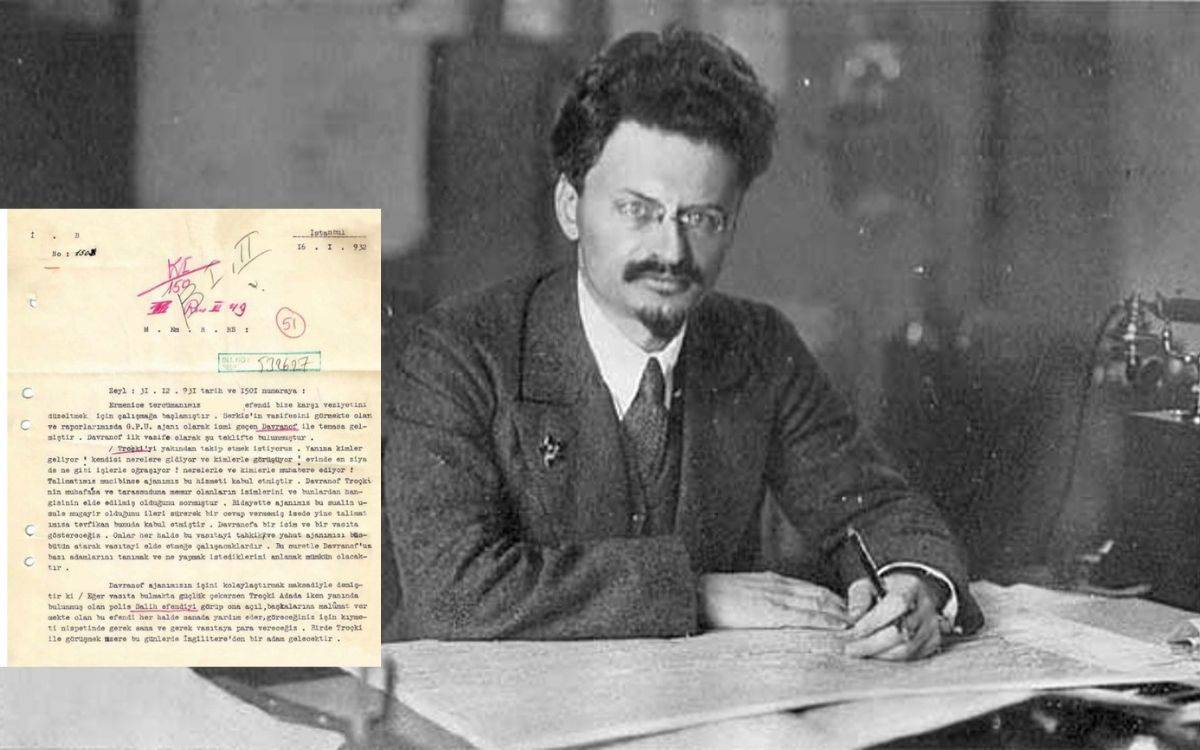Turkish intelligence declassifies reports on Soviet surveillance of Trotsky during exile in İstanbul


The National Intelligence Organization (MİT) has released a classified report detailing how Soviet intelligence monitored Bolshevik leader Leon Trotsky during his exile on Büyükada, one of İstanbul’s Princes’ Islands, between 1929 and 1933.
The document, signed by Aziz Hüdai Bey, İstanbul regional chief of the National Security Service (MAH), the predecessor of MİT, on Jan 16, 1932, reveals that Soviet intelligence services, specifically the GPU, closely tracked Trotsky’s activities. The report was made available under the "Special Collection" section of MİT’s official website.
Soviet surveillance
The report includes specific details about the Soviet intelligence operation, outlining their objectives: "We want to closely monitor Trotsky—who visits him, where he goes, and whom he communicates with. What topics does he focus on at home, and who does he correspond with?"
The document states that an agent working as an Armenian translator was assigned to make contact with an assessed Soviet operative named Davranov, who was not only tasked with tracking Trotsky but also identifying those responsible for his surveillance.
Under MAH’s directives, the Armenian translator accepted the mission and began collecting intelligence on Soviet activities related to Trotsky.
Former police officers recruited
The report notes that Davranof advised his agent to contact a former police officer, Salih Efendi, who had previously worked as one of Trotsky’s guards. The document suggests that Salih Efendi had provided information about Trotsky to certain individuals in the past.
Additionally, Soviet intelligence reported that an individual from the United Kingdom was planning to visit Trotsky in İstanbul. The report includes instructions to determine: "Who is this man from England, and why is he coming?"
Another intelligence entry mentions that Arşakuhi, the wife of Arşak, a coal depot owner in Fındıklı, was invited to Greece. The document also notes that she had previously worked as a secretary for an individual named Şahverdiyan.
Foreign visitors at Trotsky’s home
According to the report, among those who visited Trotsky’s residence on Büyükada were two foreign nationals:
- Osias Rosenzweig, identified as a British-born German citizen who claimed to be a music teacher.
- Raymond Mouliniere, a French citizen who was fluent in Turkish and Greek.
However, the purpose of their visits to Trotsky’s home remained unclear. The report concludes by stating that MAH sought to use the newly gathered intelligence to expand its network and uncover additional espionage activities.
Trotsky’s years in exile
One of the most influential revolutionary leaders of the 20th century, Leon Trotsky played a key role in shaping Communist ideology. As a close associate of Vladimir Lenin, he was instrumental in the 1917 October Revolution and later became the first foreign minister of the Soviet Union (1917–1918).
Trotsky went on to found and lead the Red Army, playing a decisive role in the Soviet Union’s victory in the civil war (1918–1924). However, after Lenin’s death, he lost a power struggle with Joseph Stalin, leading to his expulsion from the Soviet Union in 1929.
He spent four years in exile on Büyükada, where he continued promoting Marxist ideas while under constant surveillance. After leaving Turkey, he lived in various countries before settling in Mexico, where he was assassinated on Aug 21, 1940, on Stalin’s orders. (EMK/VK)



